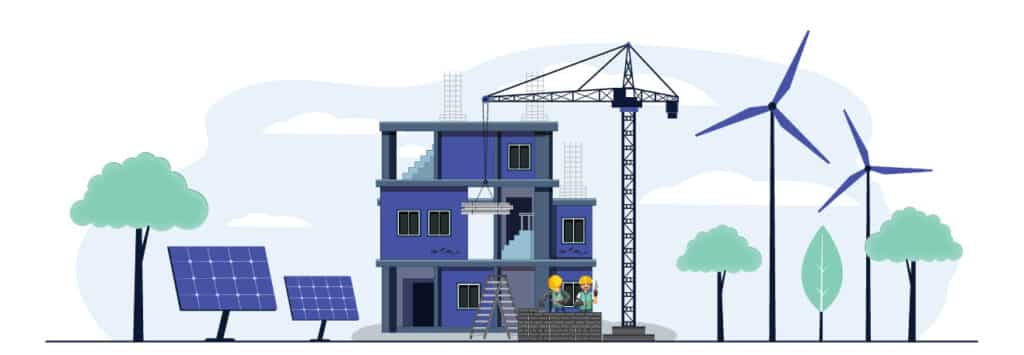Sustainable practices in real estate development

In the realm of real estate development, sustainability practices are no longer optional but essential for the environment, economy, and society. Embracing green strategies not only mitigates negative environmental impacts but also offers numerous benefits to developers and occupants alike.
This blog post delves into the significance of integrating eco-friendly solutions in real estate projects, highlighting innovative materials, effective management practices, and the economic advantages that accompany sustainable development.
Sustainable Real Estate Development: An Overview
Sustainable development in real estate refers to the practice of creating environmentally responsible and resource-efficient buildings from siting to design, construction, operation, maintenance, renovation, and deconstruction. This approach contrasts sharply with traditional development strategies, which often overlook long-term environmental and societal costs.
Adopting green building materials and technologies plays a pivotal role in this sustainable paradigm, enabling developers to reduce carbon footprints, promote energy efficiency, and utilize renewable resources more effectively.
Moreover, sustainability goes beyond the construction phase. Eco-friendly property management practices ensure that buildings continue to operate optimally, preserving resources and enhancing the quality of life for occupants.
One common misconception is that sustainable practices invariably entail higher upfront costs. However, the financial benefits of sustainable development can counterbalance initial investments through operational savings, improved occupant health, and increased property values.
The Core Elements of Eco-Friendly Development
At the heart of eco-friendly real estate development are energy efficiency, water conservation, waste reduction, and the use of sustainable materials. Techniques such as passive solar design, green roofs, and efficient lighting and HVAC systems are central to achieving these goals.
Similarly, innovative water management strategies, including rainwater harvesting and greywater recycling, significantly reduce potable water usage and diminish the development's overall environmental footprint.
By prioritizing these elements, developers not only comply with increasing regulatory demands but also cater to the growing market for green real estate, driving progress toward more sustainable urban landscapes.
Case Studies: Success Stories in Green Development
Across the globe, numerous projects exemplify the successful application of sustainable practices in real estate development. From urban high-rises that harness solar power and rainwater to suburban projects that blend seamlessly with their natural surroundings, these developments demonstrate the feasibility and benefits of going green.
These case studies often reveal a significant reduction in energy consumption, water usage, and waste production, exemplifying sustainability's positive impact on both the environment and the bottom line.
Furthermore, they highlight the crucial role of innovation and technology in achieving sustainability goals, underscoring the importance of continuous research and development in this field.
Challenges and Opportunities Ahead
Despite the clear advantages, the path to fully sustainable real estate development is fraught with challenges. These include regulatory hurdles, the need for skilled professionals familiar with green building practices, and the perception of prohibitive costs.
However, these challenges also present opportunities—for policy innovation, for the development of new technologies, and for the education and training of a new generation of developers and builders committed to sustainability principles.
As the industry evolves, so too do the tools and methodologies at its disposal, making sustainable development an increasingly attainable goal.
Conclusion
Embracing sustainability in real estate development is not just beneficial but imperative in the face of global environmental challenges. Through the integration of green materials and technologies, the adoption of eco-friendly management practices, and the recognition of sustainable development's financial merits, the real estate sector can significantly contribute to a more sustainable and equitable world.
As this post has explored, despite the obstacles, the opportunities for innovation and progress in sustainable real estate development are limitless. It is a journey worth embarking on for developers, investors, occupants, and the planet alike.

Related